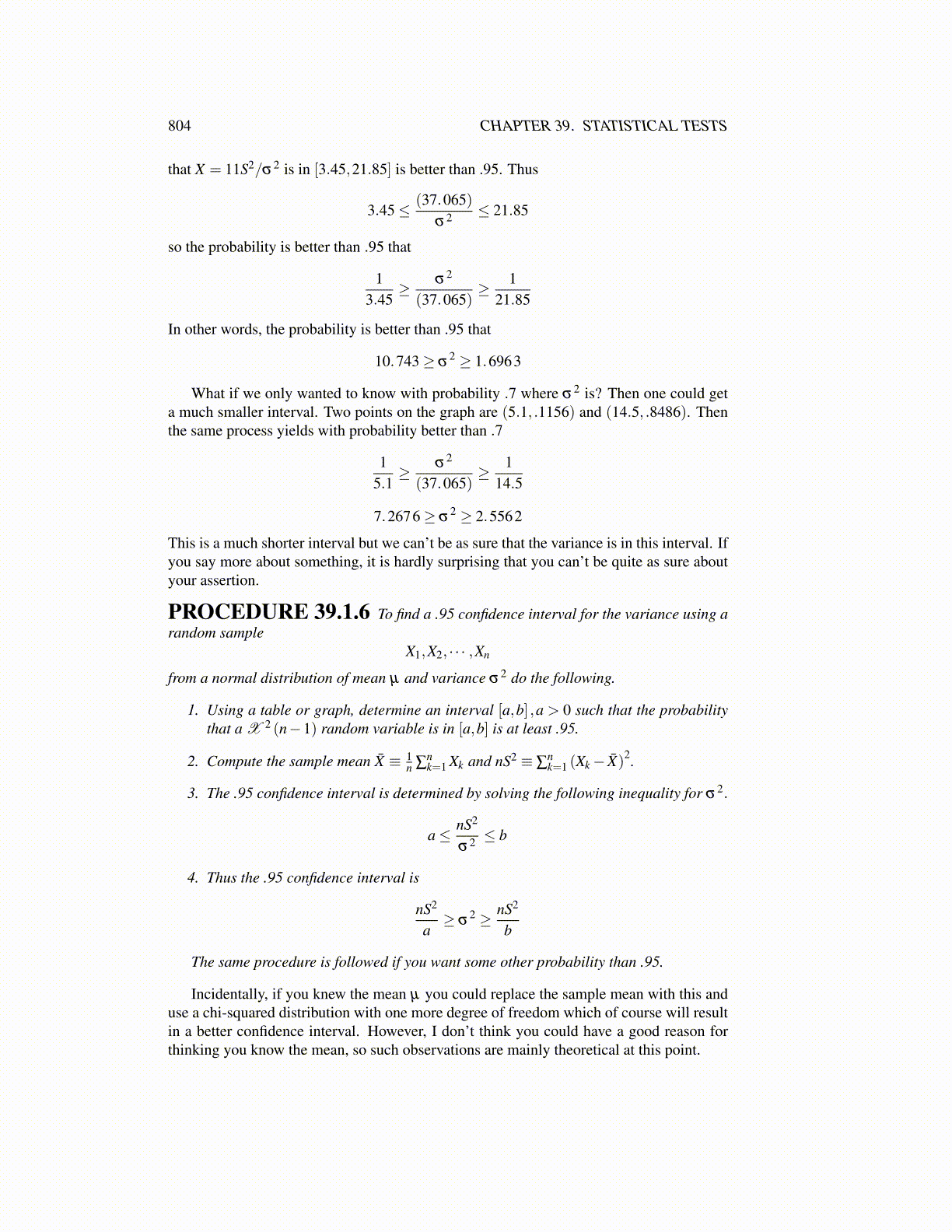
804 CHAPTER 39. STATISTICAL TESTS
that X = 11S2/σ2 is in [3.45,21.85] is better than .95. Thus
3.45≤ (37.065)σ2 ≤ 21.85
so the probability is better than .95 that
13.45
≥ σ2
(37.065)≥ 1
21.85
In other words, the probability is better than .95 that
10.743≥ σ2 ≥ 1.6963
What if we only wanted to know with probability .7 where σ2 is? Then one could geta much smaller interval. Two points on the graph are (5.1, .1156) and (14.5, .8486). Thenthe same process yields with probability better than .7
15.1≥ σ2
(37.065)≥ 1
14.5
7.2676≥ σ2 ≥ 2.5562
This is a much shorter interval but we can’t be as sure that the variance is in this interval. Ifyou say more about something, it is hardly surprising that you can’t be quite as sure aboutyour assertion.
PROCEDURE 39.1.6 To find a .95 confidence interval for the variance using arandom sample
X1,X2, · · · ,Xn
from a normal distribution of mean µ and variance σ2 do the following.
1. Using a table or graph, determine an interval [a,b] ,a > 0 such that the probabilitythat a X 2 (n−1) random variable is in [a,b] is at least .95.
2. Compute the sample mean X̄ ≡ 1n ∑
nk=1 Xk and nS2 ≡ ∑
nk=1 (Xk− X̄)
2.
3. The .95 confidence interval is determined by solving the following inequality for σ2.
a≤ nS2
σ2 ≤ b
4. Thus the .95 confidence interval is
nS2
a≥ σ
2 ≥ nS2
b
The same procedure is followed if you want some other probability than .95.
Incidentally, if you knew the mean µ you could replace the sample mean with this anduse a chi-squared distribution with one more degree of freedom which of course will resultin a better confidence interval. However, I don’t think you could have a good reason forthinking you know the mean, so such observations are mainly theoretical at this point.